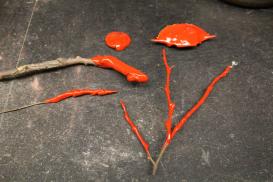Global historians have noted the burgeoning commerce and increasing global economic integration of the early modern world, especially with regard to the trade in precious metals and luxury commodities across long-distance commercial networks. Trade had flowed across Eurasia, around the Indian Ocean, and over the Mediterranean for millennia, but in this “early modern” period, larger parts of the globe became connected by the establishment of more or less regularized trading routes. Commodities and tribute bounced and jostled over these routes and along with them flowed knowledge. Embodied knowledge moved in individuals as they migrated or were resettled in new territories and it moved along with sailors, soldiers, and merchants as they pursued trade and war. It travelled in objects, instruments, manuscripts, and printed books as trade routes opened up and collectors avidly sought rare and beautiful things, and it moved as factors sent back specimens and information to the metropolis. It moved as new institutions of European colonial administration, such as the Casa de Contratación of the Spanish monarchy, of religious propagation, such as the Jesuits, as well as of the new science, such as the Académie Royale des Sciences in Paris, were established and began to sponsor information gathering of all kinds. Knowledge moved not just geographically but also epistemically, as knowledge systems of different social and cultural groups intersected. Knowledge was transformed as goods and people travelled from local settings and vernacular modes of expression—such as manufactories in Jingdezhen and Puebla, shipbuilding arsenals in Calcutta and Ragusa, workshops and gardens everywhere, curiosity cabinets, and ships, to name only a few examples—to the knowledge and written forms of evidential studies, Bencao (materia medica) and pulu texts, astronomy and astrology, and of the “new experimental philosophy.” This movement brought about the making of new knowledge at the same time that it formed new hierarchies of intellectual authority. This Working Group investigates the movement of materials, people, and practices—things that do not necessarily take a written form—in order to examine processes of knowledge making across large spans of time and distance. They are exploring the methodological and evidentiary challenges of following non-textual materials and processes, and are considering questions such as, hat are the particular problems of studying knowledge and science in motion? Can we trace the passage of matter and materials into the realm of ideas and scientific theories? How do materials, recipes, and techniques function as “knowledge”? How does the epistemic role of such things change en route? How and when do such things become stabilized as epistemic objects?
Much recent work in the history of science has focused on the circulation of knowledge within Europe, across the Atlantic World, and between the two poles of East Asia and Western Europe. This scholarship has resulted in much new information about circulation, exchange, and the transformation of knowledge, as well as new conceptual and methodological perspectives on the circulation of knowledge, and, especially, on the issues of local and global in the formation of scientific knowledge. The movement of knowledge across Eurasia (and especially across Central Asia) during the same period has been much less well-researched, despite recent scholarship on the silk routes. This Working Group considers the movement and circulation of materials, people, practices, and knowledge across the Eurasian continent in the “late medieval” and “early modern period”—ca. 750 to 1800 (this large span of time is necessary to include all parts of Eurasia, which define “early modern” differently). Two conferences in March and July 2014 were held, and a final workshop took place in July 2015. Participants have conducted research on the physical and epistemic itineraries of materials, practices, and knowledge systems across Eurasia, with the aim of producing an edited volume.

